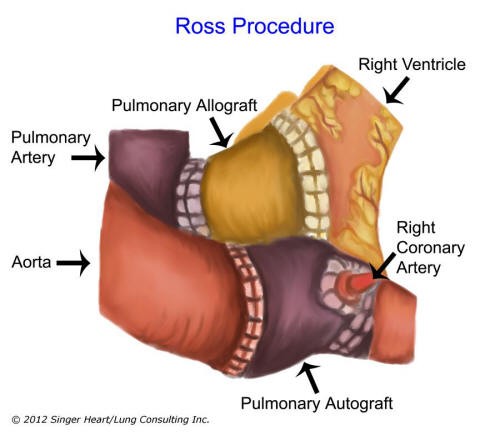The pulmonary valve separates the right ventricle from the pulmonary artery. Blood leaving the right ventricle passes across the pulmonary valve and travels via the pulmonary artery to the lungs. There, the blood receives oxygen and then is returned to the left side of the heart and on to the body.
There are a number of congenital defects involving the pulmonary valve. Tetralogy of Fallot, Transposition of the Great Vessels, and Pulmonary Atresia are some of the more common of these congenital anomalies.
Therefore, most pulmonary valve surgery is done by pediatric (congenital) cardiac surgeons. Very few surgeons perform both pediatric and adult cardiac surgery, though there are a few. My close friend, Dr. Christian Gilbert used to perform both pediatric and adult cardiac surgery at the Geisinger Medical Center, but now he has left Pennsylvania and performs only pediatric cardiac surgery in Tennessee.
The one procedure that we perform on the pulmonary valve in adult cardiac surgery is known as the Ross procedure.
The Ross Procedure
In the early 1960’s, Donald Ross in London devised a procedure where he removed a patient’s pulmonary valve along with a portion of the pulmonary artery and placed it in the aortic valve position for patient’s with aortic valve disease.
The concept was that the ideal valve replacement for the aortic valve was a patient’s own pulmonary valve. Since it was the patient’s own tissue, it should last forever.
It turns out that in select surgeons’ hands, the Ross Procedure has had considerable success. However, it is a formidable procedure and it has associated with it some very significant risks.
First, the pulmonary valve is very delicate and it is not used to the high pressure of the aortic position. As a result, the pulmonary valve may leak over time. Second, having harvested a normal pulmonary valve, it needs to be replaced. The replacement is usually a cadaver pulmonary valve which may have it’s own set of complications.
Critics of the Ross Procedure believe that it is too complex of a procedure with variable success and significant risks.
I have been trained in the Ross Procedure and I have performed a number of these procedures with success. However, I have had one patient who required a second operation due to failure of the pulmonary valve in the aortic position. This has tempered my enthusiasm for this difficult procedure.
Of note, Governor Arnold Schwarzennager had the Ross procedure done… but apparently it did not work! And, it is my understanding that as a result he has two cadaver valves: one in the aortic position and one in the pulmonary position!
I would suspect that Arnold had a very experienced surgeon. This should give you an idea of how complex the Ross Procedure can be, even for experienced surgeons.
I would be happy to talk about the Ross Procedure as an option for aortic valve replacement. Though I feel comfortable performing the procedure, I will also give you the names of the handful of surgeons throughout the country who have performed a large number of these procedures (greater than 100).
The Ross Procedure switches the pulmonary valve into the aortic valve position.
This provides the patient with his/her own tissue in the aortic position that in theory should last forever, eliminating the risk of a second operation (associated with prosthetic tissue valves such as the pig valve) and avoiding the need for anti-coagulation (blood thinners) used in metal valves.



